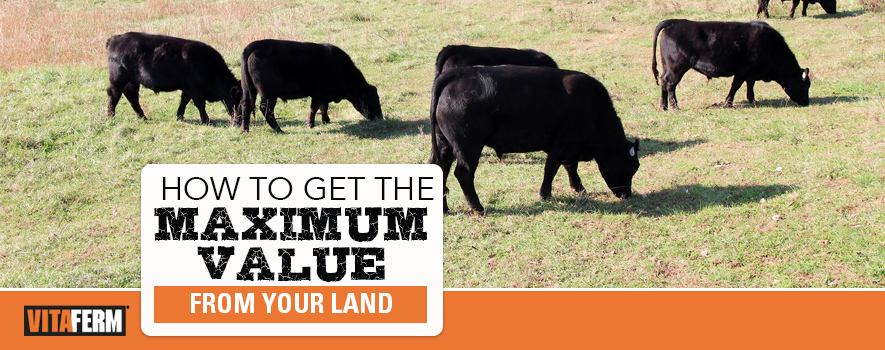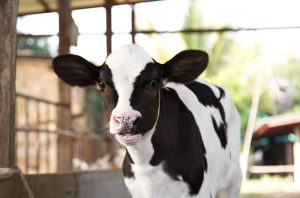Farmers and ranchers are the original stewards of the land, and with good reason. For centuries, these agriculturalists have provided their own families, the country and the world with safe and nutritious food as a result of caring for the land. For many it is a passion passed down from one generation to the next; however, it is also part of the investment in their livelihood.
“A pasture resource is the single largest investment that a beef producer is ever going to make, whether it is leased land or deeded land,” said KC Olson, Ph.D., Professor of Range Beef Cattle Nutrition and Management at Kansas State University.
Caring for pasture land is vital, not only because it is an important investment, but also to ensure that the cattle have the resources available to them. Cow-calf producers and backgrounders rely heavily on native forages late spring through early fall to turn their cattle on, and the better care and management of the land, the better the land will take care of the cattle.
Understanding the Challenges
Dr. Olson said two major challenges exist in range management: overstocking and under-resting. By definition, overstocking is simply putting too many animals on a given amount of land area for a given length of time. Under-resting occurs when animals are allowed to return to a pasture or paddock before adequate forage regrowth has occurred and is a bigger challenge than overstocking.
To better understand how many animals a particular piece of land can hold for grazing for a particular time, producers need to first understand two very important terms, stocking rate and carrying capacity. According to Dr. Olson, carrying capacity is what is possible; stocking rate is what is actual.
Stocking rate is defined as animal intake potential per unit of area per unit of time. It is calculated by a fairly simple formula. You must know three facts to calculate your stocking rate – how much forage biomass is produced on an annual basis; what percent of that forage biomass is edible; and how much an animal unit (AU) is going to consume during a grazing bout of specified length. Dr. Olson provides some long-used assumptions to help in the calculations.
He said the AU is assumed to be 1,000 pounds, originally based on the body weight of a mature cow. Although not many cows weigh 1,000 pounds any more, take your total estimated pasture group weight and divide by 1,000, and you will have your number of AU.
Example: 20 cows at about 1,200 pounds each with 20 calves that weigh 450 pounds each. Total weight per pair is: 1,650 pounds.
20 pairs x 1,650 = 33,000 / 1,000 = 33 AU
Dr. Olson said that it is assumed the typical 1000-pound animal unit will consume about 26 pounds of forage dry matter per day, so using the same example, 33 x 26 = 858 pounds of forage needed per day. Olson cautions cattle managers to remember that leaving some residual biomass behind following grazing is critical to rangeland health. Historically, about 50% of annual forage production can be removed through grazing. The remainder should be left behind to allow plants enough photosynthetic area to replace root carbohydrate reserves and to allow normal plant growth in subsequent growing seasons.
Carrying capacity, on the other hand, has some elasticity. It is the maximum stocking rate you can maintain without driving an undesirable compositional shift in forage plants on your pasture resource.
“A farmer or rancher who spends time thinking about carrying capacity is doing the most valuable, most important job on the ranch,” Dr. Olson said. “This is an exercise that is all about sustainably leveraging a ranch’s most valuable resource for greater levels of income. For example, the more we do to get rid of bare soil, the more that we do to stimulate forage growth, the more that we do to control animal distribution across a given grazing resource, the greater our carrying capacity becomes.”
Covering Bare Soil
Several solutions do exist for pasture management that will allow producers to get the most value from their forages. Dr. Olson said the first step producers should take is to get rid of bare soil where cattle congregate, where cattle are thermally comfortable, such as where they are exposed to breeze in the summer time, where they can seek shade or where they can be near water or mineral or some other feedstuff.
“Where cattle congregate, they can expose soil. That’s obvious. But there are things we tend to overlook that can be even more devastating. Cattle travel in habitual paths; it’s real common to see a trail in a pasture, and that represents bare soil. It also represents a perfect channel for water that’s moving with some velocity to flow and create soil loss. It’s actually very simple in most climates to get those trailed areas to revegetate to get those areas where cattle congregate and create localized over grazing areas. It takes a little bit of electric fence and a little bit of patience,” Dr. Olson said.
He suggests that during the growing season is the best time to fence off some of the travel paths and other areas where cattle are comfortable for protection, and those bare soil areas will tend to revegetate fairly quickly.
Other Solutions for Lazy Bovine
He further reminds that beef cattle can be lazy and will stay in areas where they are comfortable or where preferred plants grow. That is why cross-fencing, time-controlled grazing and varied placement of water, mineral, or supplements can be an important tool for improving range and pasture health.
“There is an old dogmatic adage in range management: ‘take half and leave half.’ The half you take gets converted to high-quality protein for human consumption; the half you leave is left behind to maintain soil health, to allow the plant to continue to photosynthesize and regrow, and to maximize its storage of carbohydrates. That is what keeps the plant healthy,” Dr. Olson said. “When you use cross-fencing and timed-controlled grazing, your ‘take half, leave half’ paradigm can safely become ‘take 60%, leave 40%’ because you’re building in rest for plants during the course of the grazing season. That is one key way to leverage your grazing resources for greater carrying capacity.”
There are simple things you can do to motivate animals to move to new unexplored areas. In addition to cross-fencing, you can do it with water development, placing water in points and areas that are underutilized by cattle. You can vary the placement of the mineral feeder or any supplement you might be offering. When you move those things around, you motivate cattle to move around and change grazing distribution.
If you own or lease pasture land that has a secure perimeter fence and established water sources, additional labor and equipment cost to establish electric cross-fencing and allow periodic rest for forage plants can result, after a few years, in the chance to safely and sustainably increase stocking rates.
“As a beef producer, I love to see the slow subtle change in my grasslands with the seasons. I get great joy out of checking fences, checking water, looking at my cattle, looking at my grass. That’s what the job pays me in personal satisfaction. It would be hard for me to put a dollar value on the time I spend doing those things,” Dr. Olson said.
Taking care of the land so it can care for your livestock seems pretty simple. Don’t overstock or under-rest it. Follow the advice of Dr. Olson and that same land that your grandfather ran his cattle on will be there for future generations. For more information about caring for your land in a specific region, contact your university extension office or the conservation office nearest you.
Additional resources:
The Byproduct Feed Page
http://agebb.missouri.edu/dairy/byprod/index.htm
KSU AGManager Page
http://www.agmanager.info/
Tallgrass Legacy Alliance
http://www.tallgrasslegacy.org



